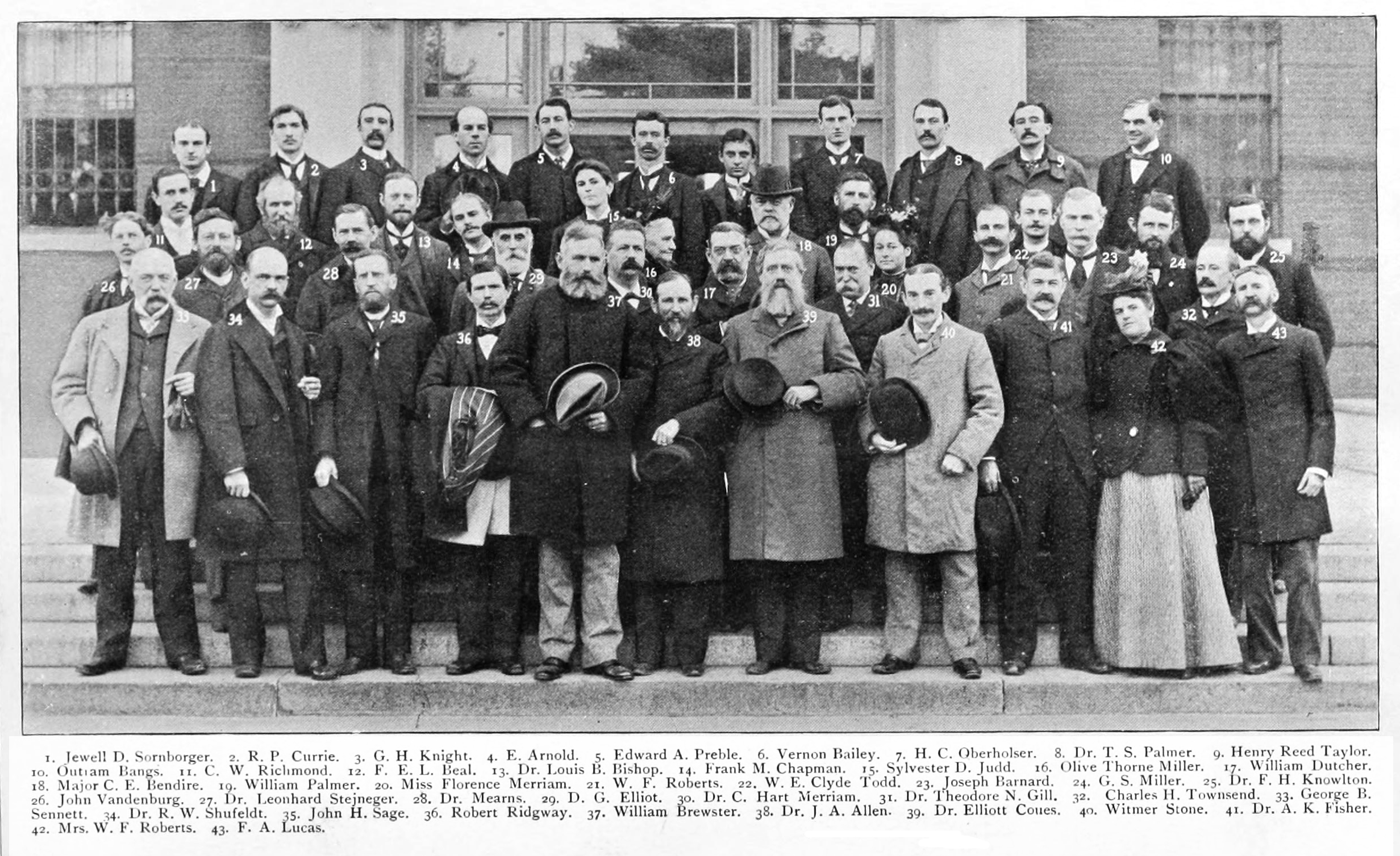|
Old World Warblers
Old World warblers are a large group of birds formerly grouped together in the bird family Sylviidae. The family held over 400 species in over 70 genera, and were the source of much taxonomic confusion. Two families were split out initially, the cisticolas into Cisticolidae and the kinglets into Regulidae. In the past ten years they have been the subject of much research and many species are now placed into other families, including the Acrocephalidae, Cettiidae, Phylloscopidae, and Megaluridae. In addition some species have been moved into existing families or have not yet had their placement fully resolved. A smaller family of warblers, together with some babblers formerly placed in the family Timaliidae and the parrotbills, are retained in a much smaller family Sylviidae. Characteristics Most Old World warblers are of generally undistinguished appearance, though some Asian species are boldly marked. The sexes are often identical, but may be clearly distinct, notably in the ge ... [...More Info...] [...Related Items...] OR: [Wikipedia] [Google] [Baidu] |
Sylviidae
Sylviidae is a family of passerine birds that includes the typical warblers and a number of babblers formerly placed within the Old World babbler family. They are found in Eurasia and Africa. Taxonomy and systematics The scientific name Sylviidae was introduced by the English zoologist William Elford Leach (as Sylviadæ) in a guide to the contents of the British Museum published in 1820. The family became part of an assemblage known as the Old World warblers and was a wastebin taxon with over 400 species of bird in over 70 genera. Advances in classification, particularly helped with molecular data, have led to the splitting out of several new families from within this group. There is now evidence that these ''Sylvia'' "warblers" are more closely related to the Old World babblers than the warblers and thus these birds are better referred to as Sylvia babblers, or just sylviids. A molecular phylogenetic study using mitochondrial DNA sequence data published in 2011 found that the s ... [...More Info...] [...Related Items...] OR: [Wikipedia] [Google] [Baidu] |
Wastebin Taxon
Wastebasket taxon (also called a wastebin taxon, dustbin taxon or catch-all taxon) is a term used by some taxonomists to refer to a taxon that has the sole purpose of classifying organisms that do not fit anywhere else. They are typically defined by either their designated members' often superficial similarity to each other, or their ''lack'' of one or more distinct character states or by their ''not'' belonging to one or more other taxa. Wastebasket taxa are by definition either paraphyletic or polyphyletic, and are therefore not considered valid taxa under strict cladistic rules of taxonomy. The name of a wastebasket taxon may in some cases be retained as the designation of an evolutionary grade, however. The term was coined in a 1985 essay by Steven Jay Gould. Examples There are many examples of paraphyletic groups, but true "wastebasket" taxa are those that are known not to, and perhaps not intended to, represent natural groups, but are nevertheless used as convenient group ... [...More Info...] [...Related Items...] OR: [Wikipedia] [Google] [Baidu] |
DNA Sequence
DNA sequencing is the process of determining the nucleic acid sequence – the order of nucleotides in DNA. It includes any method or technology that is used to determine the order of the four bases: adenine, guanine, cytosine, and thymine. The advent of rapid DNA sequencing methods has greatly accelerated biological and medical research and discovery. Knowledge of DNA sequences has become indispensable for basic biological research, DNA Genographic Projects and in numerous applied fields such as medical diagnosis, biotechnology, forensic biology, virology and biological systematics. Comparing healthy and mutated DNA sequences can diagnose different diseases including various cancers, characterize antibody repertoire, and can be used to guide patient treatment. Having a quick way to sequence DNA allows for faster and more individualized medical care to be administered, and for more organisms to be identified and cataloged. The rapid speed of sequencing attained with modern D ... [...More Info...] [...Related Items...] OR: [Wikipedia] [Google] [Baidu] |
Monophyly
In cladistics for a group of organisms, monophyly is the condition of being a clade—that is, a group of taxa composed only of a common ancestor (or more precisely an ancestral population) and all of its lineal descendants. Monophyletic groups are typically characterised by shared derived characteristics ( synapomorphies), which distinguish organisms in the clade from other organisms. An equivalent term is holophyly. The word "mono-phyly" means "one-tribe" in Greek. Monophyly is contrasted with paraphyly and polyphyly as shown in the second diagram. A ''paraphyletic group'' consists of all of the descendants of a common ancestor minus one or more monophyletic groups. A '' polyphyletic group'' is characterized by convergent features or habits of scientific interest (for example, night-active primates, fruit trees, aquatic insects). The features by which a polyphyletic group is differentiated from others are not inherited from a common ancestor. These definitions have taken ... [...More Info...] [...Related Items...] OR: [Wikipedia] [Google] [Baidu] |
Form Taxon
Form classification is the classification of organisms based on their morphology, which does not necessarily reflect their biological relationships. Form classification, generally restricted to palaeontology, reflects uncertainty; the goal of science is to move "form taxa" to biological taxa whose affinity is known. Form taxonomy is restricted to fossils that preserve too few characters for a conclusive taxonomic definition or assessment of their biological affinity, but whose study is made easier if a binomial name is available by which to identify them. The term "form classification" is preferred to "form taxonomy"; taxonomy suggests that the classification implies a biological affinity, whereas form classification is about giving a name to a group of morphologically-similar organisms that may not be related. A "parataxon" (not to be confused with parataxonomy), or "sciotaxon" (Gr. "shadow taxon"), is a classification based on incomplete data: for instance, the larval stage o ... [...More Info...] [...Related Items...] OR: [Wikipedia] [Google] [Baidu] |
Sylvioidea
Sylvioidea is a superfamily of passerine birds, one of at least three major clades within the Passerida along with the Muscicapoidea and Passeroidea. It contains about 1300 species including the Old World warblers, Old World babblers, swallows, larks and bulbuls. Members of the clade are found worldwide, but fewer species are present in the Americas. Systematics The superfamily Sylvioidea was first proposed in 1990 in the Sibley–Ahlquist taxonomy of birds based on DNA–DNA hybridization experiments. More recent studies based on comparison of DNA sequences have failed to support the inclusion of some families such as Certhiidae (treecreepers), Sittidae (nuthatches), Paridae (tits and chickadees) and Regulidae (goldcrests and kinglets) but instead support the addition of Alaudidae (larks). Some of the families within the Sylvioidea have been greatly redefined. In particular, the Old World warbler family Sylviidae and Old World babbler family Timaliidae were used as wastebin ta ... [...More Info...] [...Related Items...] OR: [Wikipedia] [Google] [Baidu] |
Taxonomic Rank
In biological classification, taxonomic rank is the relative level of a group of organisms (a taxon) in an ancestral or hereditary hierarchy. A common system consists of species, genus, family (biology), family, order (biology), order, class (biology), class, phylum (biology), phylum, kingdom (biology), kingdom, domain (biology), domain. While older approaches to taxonomic classification were phenomenological, forming groups on the basis of similarities in appearance, organic structure and behaviour, methods based on genetic analysis have opened the road to cladistics. A given rank subsumes under it less general categories, that is, more specific descriptions of life forms. Above it, each rank is classified within more general categories of organisms and groups of organisms related to each other through inheritance of phenotypic trait, traits or features from common ancestors. The rank of any ''species'' and the description of its ''genus'' is ''basic''; which means that to iden ... [...More Info...] [...Related Items...] OR: [Wikipedia] [Google] [Baidu] |
Taxa
In biology, a taxon (back-formation from ''taxonomy''; plural taxa) is a group of one or more populations of an organism or organisms seen by taxonomists to form a unit. Although neither is required, a taxon is usually known by a particular name and given a particular ranking, especially if and when it is accepted or becomes established. It is very common, however, for taxonomists to remain at odds over what belongs to a taxon and the criteria used for inclusion. If a taxon is given a formal scientific name, its use is then governed by one of the nomenclature codes specifying which scientific name is correct for a particular grouping. Initial attempts at classifying and ordering organisms (plants and animals) were set forth in Carl Linnaeus's system in ''Systema Naturae'', 10th edition (1758), as well as an unpublished work by Bernard and Antoine Laurent de Jussieu. The idea of a unit-based system of biological classification was first made widely available in 1805 in the int ... [...More Info...] [...Related Items...] OR: [Wikipedia] [Google] [Baidu] |
Gnatcatcher
The Gnatcatchers are a family of small passerine birds called Polioptilidae. The 21 species occur in North America, North and South America (except for the far south and the high Andean regions). Most species of this mainly tropical and subtropical group are resident, but the blue-grey gnatcatcher of the United States and southern Canada bird migration, migrates south in winter. They are close relatives of the wrens.Atwood, J. & Lerman, S. (2006) Family Polioptilidae (Gnatcatchers). pp. 350–377 in: del Hoyo, J., A. Elliott, and D. Christie. eds (2006). ''Handbook of Birds of the World'' Vol. 11. Old World Flycatchers to Old World Warblers. Lynx Edicions, Barcelona. Description These dainty birds are intermediate between Old World warblers and wrens in their structure and habits, moving restlessly through foliage seeking insects. The gnatcatchers are mainly soft bluish grey in colour, and have the typical insectivore's long sharp bill. Many species have distinctive black he ... [...More Info...] [...Related Items...] OR: [Wikipedia] [Google] [Baidu] |
American Ornithologists' Union
The American Ornithological Society (AOS) is an ornithological organization based in the United States. The society was formed in October 2016 by the merger of the American Ornithologists' Union (AOU) and the Cooper Ornithological Society. Its members are primarily professional ornithologists, although membership is open to anyone with an interest in birds. The society publishes the two scholarly journals, ''The Auk'' and '' The Condor'' as well as the ''AOS Checklist of North American Birds''. In 2013, the American Ornithologists' Union announced a close partnership with the Cooper Ornithological Society, including joint meetings, a centralized publishing office, and a refocusing of their respective journals to increase efficiency of research. In October 2016, the AOU announced that it was ceasing to operate as an independent union and was merging with the Cooper Ornithological Society to create the American Ornithological Society. History The American Ornithologists' Unio ... [...More Info...] [...Related Items...] OR: [Wikipedia] [Google] [Baidu] |
Monotypic
In biology, a monotypic taxon is a taxonomic group (taxon) that contains only one immediately subordinate taxon. A monotypic species is one that does not include subspecies or smaller, infraspecific taxa. In the case of genera, the term "unispecific" or "monospecific" is sometimes preferred. In botanical nomenclature, a monotypic genus is a genus in the special case where a genus and a single species are simultaneously described. In contrast, an oligotypic taxon contains more than one but only a very few subordinate taxa. Examples Just as the term ''monotypic'' is used to describe a taxon including only one subdivision, the contained taxon can also be referred to as monotypic within the higher-level taxon, e.g. a genus monotypic within a family. Some examples of monotypic groups are: Plants * In the order Amborellales, there is only one family, Amborellaceae and there is only one genus, '' Amborella'', and in this genus there is only one species, namely ''Amborella trichopoda. ... [...More Info...] [...Related Items...] OR: [Wikipedia] [Google] [Baidu] |




